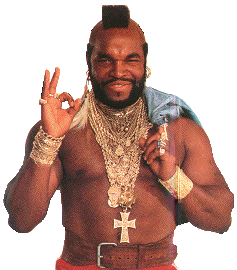Warbringer
Explorer
In context, it actually reads as a reference to *himself* as "some goob on a message board".
Then my apologies to KM for completely misreading
In context, it actually reads as a reference to *himself* as "some goob on a message board".
An education is not what is required. Backing up numbers and statistics that you cite with 'great confidence' as the basis for your argument is all that is being requested. This is not an unreasonable request.
The issue with "it's okay if it's both sexes!" is simply that the art exists within a cultural context. I don't think it's radical to propose that nearly-naked sorceresses and mighty-thewed barbarians mean something different when found in D&D art. Particularly in D&D culture and in "geek" culture in general, there's simply not an equivalence right now. It'd be awesome for the game to exist in a culture where "nearly-naked men" and "nearly-naked women" mean the same thing, but we don't.But the books should only allow for it, not make it apparent in the art! Unless they do it equally for both sexes, but that might require an age restriction based on sexual content depending on the degree to which it's done.
I so support this method. Random tables are just too D&D to stop using when it comes to art. As always, play what you likeI've said it before and I'm saying it again, WotC should randomly roll all the attributes of all the various characters shown throughout the game, adjusting the random tables for specific requirements if necessary.
I agree, honestly. I'm not against the idea, but, I don't know... it just came off as way too obvious. I'd like more subtlety. I saw a pretty even split in White Wolf's Mage book, but it didn't feel like pandering. I know my 3.5 book is almost all "she" and "her", and I don't think I have a problem with that. It just felt... forced, really. I'm not sure how to express why it felt that way, but it did.D&D pronouns being 50-50% male-female pronouns seems a little like pandering to me, frankly.
You had time to dig up the Mr. T picture. Maybe next time, you can dig up that easily-accessed Wiki page and link that for the people that ask you to cite your "well-documented" sources that you have "great confidence" in. Just a thought. As always, play what you likeWe live in the age of information, anyone can access Wikipedia, and I am going to be a lot more rambly and sloppy in some casual message board conversation than would do the topic justice. I pity the fool that relies on me for their education.

Imagining a world that has never existed is kind of the point of playing a game of D&D.
However, it's not the point of being an art director for D&D.
I don't think WotC should confuse the two.
The issue with "it's okay if it's both sexes!" is simply that the art exists within a cultural context. I don't think it's radical to propose that nearly-naked sorceresses and mighty-thewed barbarians mean something different when found in D&D art. Particularly in D&D culture and in "geek" culture in general, there's simply not an equivalence right now. It'd be awesome for the game to exist in a culture where "nearly-naked men" and "nearly-naked women" mean the same thing, but we don't.
-O
While the discussion over what is the right thing to do is interesting, even if there is disagreement on what is right, for WOTC their overriding "right" has to be fiduciary responsibility to the shareholders. They are morally obligated to do the best they can for the people who have invested in the company, and I've no doubt that that's what they'll do.
So what are the considerations? There are people that like women in chainmail bikinis who will buy more if they go that direction. There are people that are offended by such. I'd guess that the first group is much larger than the second, whether or not they're willing to own up to it on a public messageboard, so there will be chainmail bikinis.
There are people that would like to see nontraditional sexuality in games. If the game has such, it will make some additional sales to these folks. There are people who are offended by such and will not buy the books if this is included. I'd guess that the second group is much larger than the first and WOTC will act accordingly.
I think it comes down to a choice as to whether they will try to bring in new customers by changing the direction of the game a bit, or keeping current customers happy by staying the course.
You had time to dig up the Mr. T picture. Maybe next time, you can dig up that easily-accessed Wiki page and link that for the people that ask you to cite your "well-documented" sources that you have "great confidence" in. Just a thought. As always, play what you like
